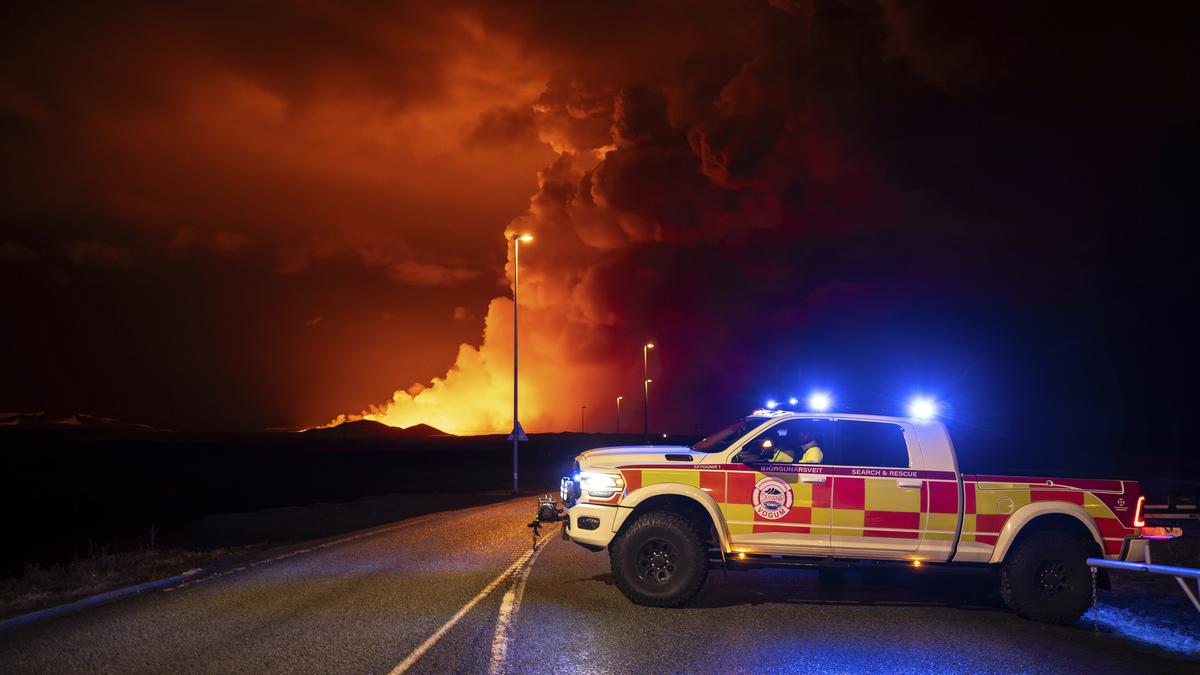
Iceland's latest volcanic eruption is decreasing in power, and defences are holding
The Hindu
Lava from Icelandic volcano flows toward Grindavik, threatening town defenses, as scientists predict eruption's end within hours.
Lava from a volcanic eruption in Iceland flowed on March 17 toward defences around the town of Grindavik, which have so far held the molten rock back from the evacuated community.
Scientists said the eruption appeared to be weakening and would probably peter out within hours.
A volcanic system on the Reykjanes Peninsula in the country's southwest erupted on March 16 for the fourth time in three months, sending orange jets of lava into the night sky.
Iceland’s Meteorological Office said the eruption opened a fissure in the earth about 3 km long between the mountains of Stóra-Skógfell and Hagafell.
The Met Office on March 17 that lava was flowing south and southeast at about 1 km an hour, and might reach the ocean. Defensive barriers were built to stop it from inundating the main road along the peninsula’s southern coast.
Hundreds of people were evacuated from the Blue Lagoon thermal spa, one of Iceland’s top tourist attractions, when the eruption began, national broadcaster RUV said. No flight disruptions were reported at nearby Keflavik, Iceland’s main airport.
The eruption site is a few kilometers northeast of Grindavik, a coastal town of 3,800 people about 50 km southwest of Iceland’s capital, Reykjavik.











